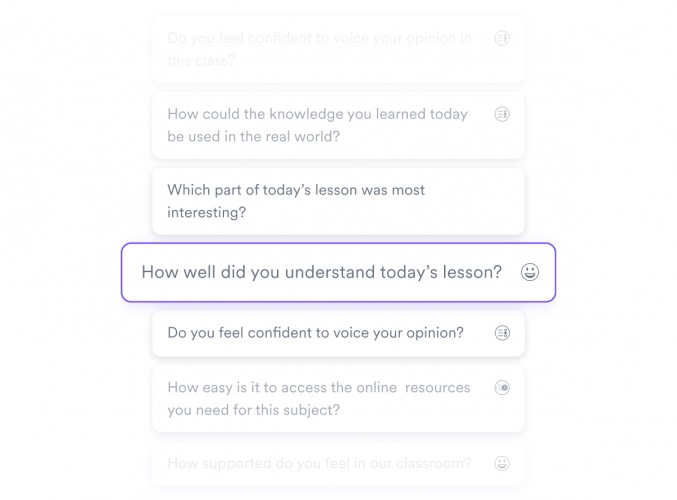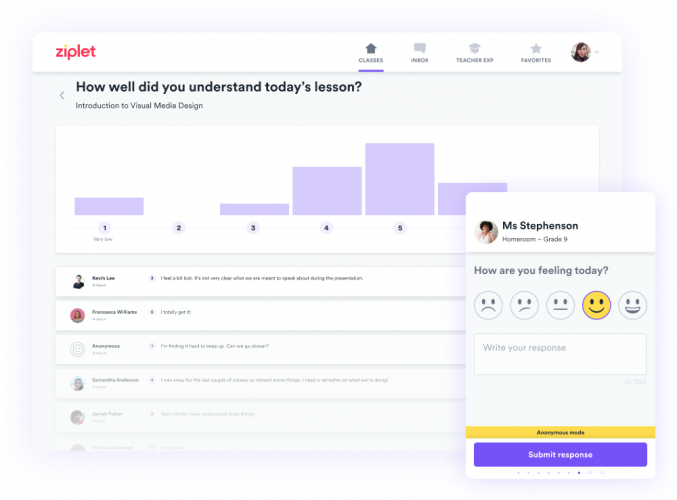
Ziplet
Ziplet makes it easy to check in with students. Conduct exit tickets, check on student comprehension, SEL, wellbeing, or prompt reflection in under 30 seconds. A huge template library of questions makes it easy, and teachers can even reply to individual or group student responses with a message or emoji.
The pedagogical analysis covers how the product supports learning of the identified skills. The student’s role is assessed by four contrary pair parameters, which are selected to cover the most essential aspects on the use of the product.
The following are the high educational quality aspects in this product.
The supported learning goals are identified by matching the product with several relevant curricula descriptions on this subject area. The soft skills are definitions of learning goals most relevant for the 21st century. They are formed by taking a reference from different definitions of 21st century skills and Finnish curriculum.





User reviews for Ziplet
You need to log in to post a review.